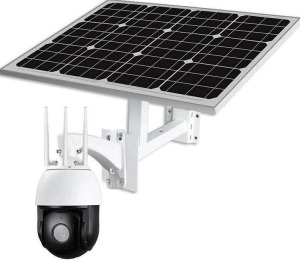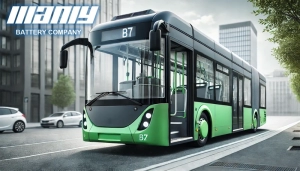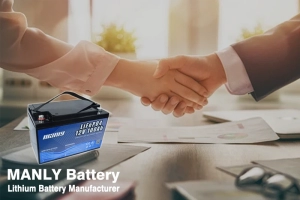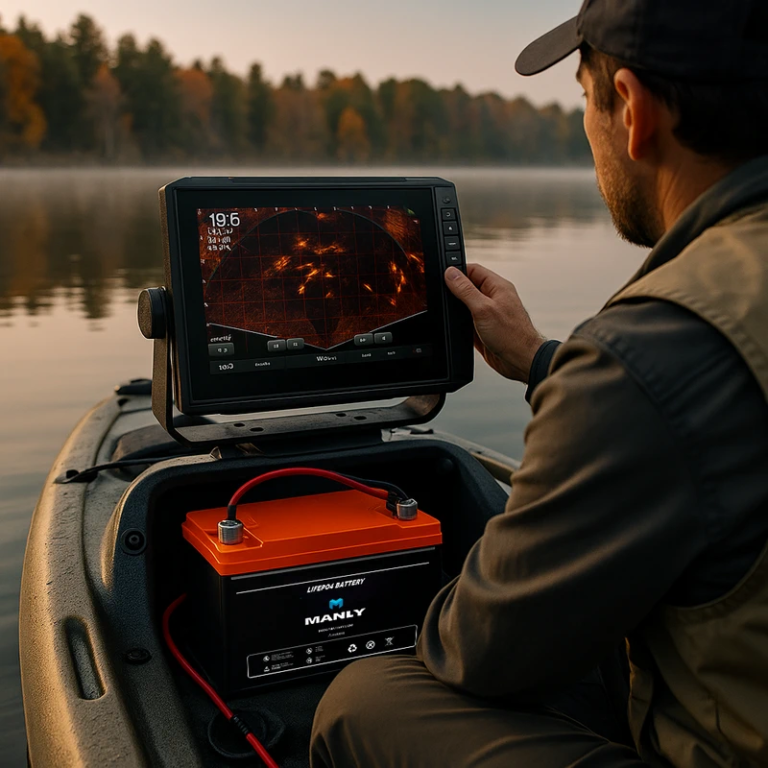Le prime 5 scelte di batterie per lo scooter elettrico nel 2023
Sommario
- Le prime 5 scelte di batterie per lo scooter elettrico nel 2023
- 1. Padroneggiare le basi: cosa e perché delle batterie di scooter elettrici
- 2. Demistificante Specifiche della batteria: una guida di scooterist ai termini della batteria
- 3. Batterie svelate: un'immersione profonda in vari tipi di batterie
- 4. Tensione Sag: lo scarico nascosto sulla potenza dello scooter
- 5. Classificazione della capacità: quanto succo ha davvero il tuo scooter?
- 6. C Fores: svelare il mistero della velocità di scarico della batteria dello scooter
- 7. Suggerimenti per mantenere la durata della batteria a scooter elettrica
- 8. Segnali di avvertimento: individuare una batteria di scooter elettriche in fallimento prima che sia troppo tardi
- 9. Prevenire gli incendi della batteria dello scooter elettrico: misure di sicurezza che è necessario sapere
- 10. Conclusione
1. Padroneggiare le basi: cosa e perché delle batterie di scooter elettrici
Nel mondo degli scooter elettrici, è essenziale comprendere il ruolo chiave delle batterie. Non sono solo fonti di alimentazione: determinano le prestazioni, la velocità, la gamma e la durata della tua scooter, cos'è esattamente una batteria di scooter elettriche? In poche parole, è la centrale elettrica del tuo scooter. Memorizza e scarica l'elettricità per mantenere la corsa in movimento. Dall'alimentazione del motore all'accensione dei fari, la batteria è cruciale per ogni componente elettrico sullo scooter. Senza di essa, il tuo scooter è solo un mazzo con ruote. Perché il tipo di batteria è così critico? È semplice: non tutte le batterie sono costruite allo stesso modo. Troverai vari tipi come acido piombo, idruro di nichel-metallo, litio eLiFePO4sul mercato. Ogni tipo viene fornito con i suoi pro e contro, che colpiscono le prestazioni dello scooter. Per esempio, considera la chimica dietro queste batterie. Le batterie al piombo-acido possono essere più convenienti, ma sono più pesanti e hanno una durata più breve. D'altra parte, le batterie al litio, come Li-ion o LifePo4, sono leggere e di lunga durata, ma costano più in anticipo. Next, parliamo di capacità-una misura cruciale dello stoccaggio di energia di una batteria. Di solito è indicato in Ampere-Hour (AH). Una capacità più elevata significa una gamma di cavalchi più lunga per il tuo scooter. Quindi, una batteria da 20 ah fornirà in genere un raggio più lungo di una batteria da 10 ah, a parità di fattori. In sintesi, la batteria del tuo scooter è più di una semplice unità di stoccaggio di energia. Ha un impatto sulle prestazioni, nella gamma e nella longevità della tua corsa. Una comprensione di base del suo funzionamento può aiutarti a ottimizzare la tua esperienza con scooter. Saremo più profondi in diversi tipi di batterie nelle sezioni seguenti. Rimani sintonizzato!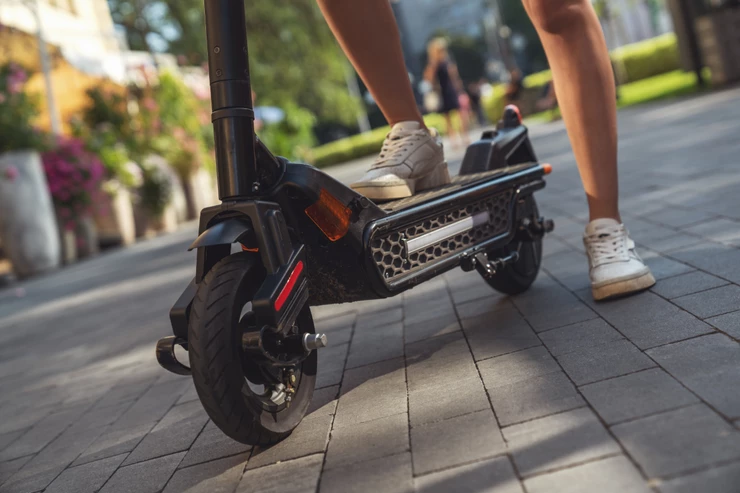
2. Demistificante Specifiche della batteria: una guida di scooterist ai termini della batteria
Navigating the world of battery specifications can feel like learning a new language. But don't fret, in this section, I'll help demystify some common battery terms for the avid scooterist.Let's start with 'voltage'. You may have seen e-scooter batteries described as 36V, 48V, or 52V. 'V' stands for volts, the unit of voltage. Simply put, voltage is the 'push' that gets the electricity flowing. It's like water pressure in a hose. The 36v in an electric scooter battery 36v tells us its voltage is 36 volts. Higher voltage means more power, leading to a faster scooter.What about 12 volt battery for electric scooter? This is a lower voltage battery. It delivers less power, but it's lighter and cheaper. It's often seen in smaller, less expensive scooters.Now, 48v lithium battery for electric scooter. This one packs a lot of power. Its high voltage is perfect for faster, more powerful scooters. Yet, it's still relatively light and compact, thanks to its lithium construction.Next up is 'capacity', usually measured in Ampere-hours (Ah). It's a measure of how much energy a battery can store. For instance, a 10Ah battery can theoretically deliver a current of 10 Amps for an hour. Higher capacity usually equals a longer ride range, all other factors being equal.You might also come across the term 'C rate'. It refers to the rate at which a battery is discharged relative to its maximum capacity. A 1C rate means the discharge current will drain the entire battery in one hour.Let's talk about 'Voltage Sag'. It's the temporary drop in a battery's voltage under load. You might notice your e-scooter slowing down a bit when climbing hills, even though the battery isn't low. That's voltage sag in action!One more critical term is 'Battery Management System' or BMS. It's like the battery's personal assistant, ensuring it charges and discharges safely and efficiently. A good BMS can prolong your battery's life and keep it in top shape.Finally, you may hear about 'Swappable Batteries'. These are exactly what they sound like - batteries you can swap out. This feature is becoming increasingly popular in e-scooters. It allows you to extend your range by carrying a spare, fully-charged battery.So, there you have it. A quick guide to common battery specifications. Armed with this knowledge, you'll find it easier to understand battery specs and make informed choices when buying or maintaining your e-scooter. But the learning doesn't stop here. Stay tuned as we dive deeper into specific battery types in the next section!3. Batterie svelate: un'immersione profonda in vari tipi di batterie
3.1 Batterie al piombo-acido:
As we delve into our battery exploration, let's first turn our attention to the age-old contender in the realm of electric scooter power: Lead-acid batteries.Rooted in an age-old technology, lead-acid batteries are quite similar to the battery you'd find under the hood of your car. They're known for their reliability, making them a common choice for a wide array of rechargeable battery applications. Need a burst of power to start a car? A lead-acid battery gets the job done. However, they're not without their shortcomings.The most glaring downside of lead-acid batteries lies in their energy density, which is markedly poor. Simply put, energy density tells you how much energy a battery can store relative to its weight. In this arena, lead-acid batteries disappoint. They are notably heavy for the amount of energy they contain. In comparison, Li-ion batteries (a category we'll delve into later) outperform lead-acid batteries by about tenfold in terms of energy density.So, where do we often find these hefty power storages? They're commonly used in golf carts, forklifts, and, notably, kids' e-scooters. Companies like Razor offer inexpensive electric scooters for children powered by lead-acid batteries.Yet, their appeal lies in their price tag. These batteries are relatively inexpensive, which often makes them an appealing choice, especially for lower-priced electric scooters designed for young riders.In a nutshell, while lead-acid batteries bring reliability and a friendly price tag to the table, their poor energy density and weighty nature make them less than ideal for more demanding electric scooter applications. Keep reading as we dive into more efficient, lightweight alternatives in the upcoming sections.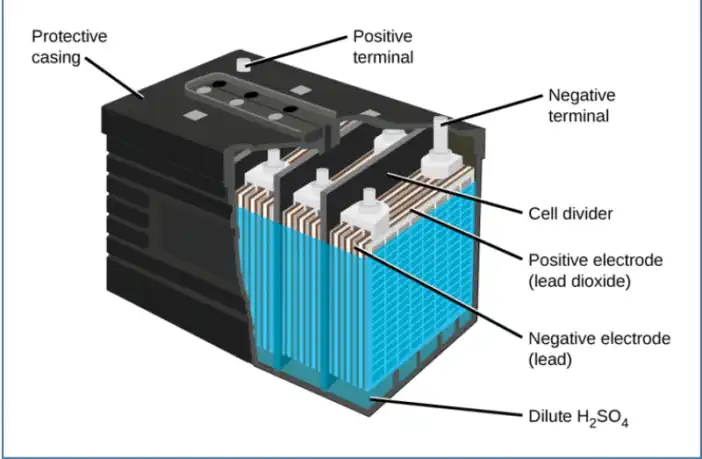
3.2 batterie idruro di nichel-metallo:
Shifting gears, let's now explore the realm of Nickel-Metal Hydride batteries, the under-the-radar workhorses of the electric scooter world.As a newer technology compared to lead-acid, Nickel-Metal Hydride batteries (commonly referred to as NiMH) provide a significant upgrade in performance. They're characterized by better energy density, meaning they pack more power into a lighter package. This trait alone makes them a go-to choice for those desiring a less weighty ride without compromising on power.But here's the kicker: NiMH batteries boast a lower self-discharge rate. In other words, they hold their charge longer when not in use. This makes them an appealing choice for scooter enthusiasts who don't ride daily but want their scooters ready to roll when they are.On the environmental front, NiMH batteries score some points, too. They contain no toxic heavy metals (like lead or cadmium), making them a more eco-friendly option. This attribute aligns well with the environmentally conscious ethos that drives many electric scooter users.However, it's not all sunshine and roses. Nickel-Metal Hydride batteries tend to be more expensive than their lead-acid counterparts. Additionally, they have a shorter overall lifespan and can exhibit a "memory effect" — a phenomenon where batteries lose their maximum energy capacity when repeatedly recharged after being only partially discharged.In summary, Nickel-Metal Hydride batteries offer a valuable step up from the dated lead-acid technology, providing enhanced energy density and longer charge retention. While they command a higher price and may not last as long, their environmental friendliness and performance perks make them a worthy contender in the world of electric scooter power sources. Stay tuned as we delve into even more advanced battery technologies in the sections to come.3.3 Batterie agli ioni di litio:
Il prossimo in linea, abbiamo i grandi giocatori nel gioco della batteria Scooter elettrica -Batterie agli ioni di litio. Renowned for their high-energy density, Li-Ion batteries pack a punch, delivering considerable power while maintaining a relatively light footprint. This optimal energy-to-weight ratio is a significant factor in their popularity among electric scooter enthusiasts.The versatility of Li-Ion batteries is another feather in their cap. This technology hosts a variety of chemistries, each having its unique characteristics and strengths. From Lithium manganese oxide (LiMn2O4) and Lithium manganese nickel (LiNiMnCoO2) to Lithium iron phosphate (LiFePO4), each variant presents a different trade-off between performance and safety.Now, let's crunch some numbers. Compared to technologies like Ni-Cd (Nickel-Cadmium) or Ni-MH (Nickel-Metal Hydride), Li-Ion batteries can deliver three times more energy. This high output, coupled with their excellent longevity, ensures that they stay power-ready for a long haul, making them an attractive choice for frequent riders.Maintenance? With Li-Ion batteries, you can strike that off your list. These batteries are low-maintenance, freeing you from the need for scheduled cycling to retain battery life. Moreover, they're immune to the memory effect, a notorious issue with some battery types where repeated partial charge-discharge cycles lower the overall capacity.However, it's not a complete smooth sailing with Li-Ion batteries. They are prone to overheating and can incur damage at high voltages. Hence, they require built-in safety mechanisms to keep internal pressure and voltage in check, occasionally adding to their weight and marginally limiting performance.Li-Ion batteries also age over time, losing capacity and starting to falter after several years. Yet, considering their overall performance and longevity, many users see this as a worthwhile trade-off.To sum it up, Li-Ion batteries, despite a few hiccups, offer a solid, efficient, and reliable power source for electric scooters, keeping you on the move with minimum fuss. As we proceed further, we'll explore another exciting addition to this league - the game-changing LiFePO4 batteries.3.4 Lithium Manganese (INR, NMC):
If you're seeking a safe, high-capacity choice for your electric scooter battery, Li-Ion batteries, particularly those with INR chemistry, are a top choice. These batteries have cemented their place as favorites among electric scooter enthusiasts and for good reason.The INR, or Lithium Manganese Nickel, battery chemistry is hailed as one of the safest. These batteries don't just offer high capacity; they also provide high output current. Thanks to the presence of manganese, the internal resistance of these batteries is reduced, allowing for high current output while maintaining cooler temperatures. As a result, this reduces the chances of thermal runaway and fire, contributing to the overall safety of your electric scooter. It's no wonder that quality electric scooters like the WePed GT 50e and various Dualtron models are equipped with INR batteries.But safety isn't the only upside of these batteries. Li-Ion batteries with INR chemistry also shine in terms of energy density and longevity. With a higher energy density, these batteries can store more power, extending the range of your electric scooter ride. In terms of longevity, these batteries have a longer lifecycle compared to cobalt-based batteries, all the while being more cost-efficient.More so, INR batteries exhibit superior thermal stability than their LCO counterparts, adding another layer to their safety profile. This makes them a common choice not just for electric scooters, but also for power tools and e-bikes.However, every coin has two sides, and INR batteries are no exception. Despite their plethora of benefits, they do have a minor shortcoming. These batteries deliver a slightly lower voltage than cobalt-based batteries. But for many scooterists, the high capacity, safety, and cost-efficiency of INR batteries more than makeup for this small drawback.In conclusion, if you're looking for a high-flying favorite in the realm of electric scooter batteries, Li-Ion batteries, particularly those with INR chemistry, certainly make the cut. Their blend of safety, power, and longevity offers an unmatched riding experience, helping you make the most of your electric scooter adventures.3.5 Batterie LifePO4:
Le batterie LifePO4 stanno girando la testa nel mondo degli e-scooter. Sono salutati come la futura centrale elettrica. Perché? Bene, per diversi motivi. Difficili, hanno un'alta densità di energia. Questo è un discorso tecnologico per "memorizzano molto potere". I numeri? Sono circa 90-120 WH/kg. Ciò significa lunghi viaggi, meno carico. Secondo, hanno un ciclo di vita impressionante. Stiamo parlando da 2000 a 5000 cicli di carica. Ben oltre i loro concorrenti. Che cosa significa? Il tuo scooter e-scooter corre più a lungo e più forte, dandoti miglia e miglia di corse lisce. Anche il gost è un fattore. Sì, sono più costosi. Ma considera questo, la loro longevità significa che li sostituirai meno spesso. A lungo termine, risparmierai. E time, in qualche modo, parliamo di sicurezza. Le batterie LifePO4 hanno un'eccellente stabilità termica. Hanno meno probabilità di surriscaldarsi, riducendo il rischio di incendi della batteria. Questo è un grande assegno per la sicurezza. In sintesi,batterie LiFePO4sono un'ottima scelta per gli e-scooter. Offrono alta potenza, lunga vita, efficienza dei costi e sicurezza. Il futuro sembra luminoso con Lifepo4 che guida la carica.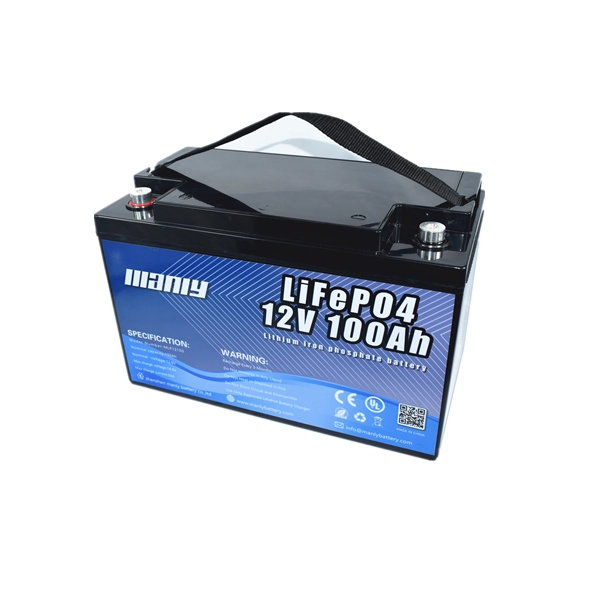
| Attributo | Batteria al piombo-acido | Batteria NIMH | Batteria agli ioni di litio | Batteria INR (NMC) | Batteria LiFePO4 |
|---|---|---|---|---|---|
| Densità di energia (Wh/kg) | 33-42 | 60-120 | 150-200 | 150-220 | 90-120 |
| Ciclo di vita | 500-800 | 500-1000 | 1000-2000 | 1000-2000 | 2000-5000 |
| Tasso di auto-scarica (%/mese) | 5 | 20-30 | 2 | 2 | 3 |
| Tasso c | 1C | 1C-2C | 1C-2C | 2C-3C | 1C-2C |
| Tensione nominale (V) | 12 | 1.2 | 3.6 | 3.6 | 3.2 |
| Capacità utilizzabile (AH) | 7.5 - 20 | 2 - 9 | 2 - 3 | 2 - 3 | 10 - 100 |
| Costo | $ | $$ | $$$ | $$$ | $$$ |
| Valutazione complessiva (STERS) | ★★ ☆☆☆ | ★★★ ☆☆ | ★★★★ ☆ | ★★★★ ☆ | ★★★★★ |
4. Tensione Sag: lo scarico nascosto sulla potenza dello scooter
C'è un colpevole subdolo nel sistema batteria dello scooter che potrebbe semplicemente drenare la tua potenza: abbassamento della tensione. Ma cosa è esattamente? Quando inizia il tuo scooter e metti una domanda sulla batteria, la tensione scende istantaneamente. È come una mini interruzione di corrente e se stai tenendo d'occhio la tensione della batteria, potrebbe sembrare che tu abbia appena perso un pezzo significativo della tua potenza. Ma non fare il panico ancora. Una volta che il carico si attenua, la tensione della batteria rimbalza al suo livello reale. Pochi colpevoli possono essere dietro questo fenomeno. Potrebbe essere l'aumento dell'energia necessaria per avviare il motore, un po 'di resistenza elettrica, fluttuazioni della temperatura o persino un componente ingannevole. Svuotare la batteria alla sua ultima caduta può anche innescare l'abbassamento della tensione, poiché il litio nella batteria lotta per tenere il passo con la velocità di scarica. Pertanto, la caduta di tensione accelera più a lungo, ma stai certo, la batteria ha bisogno di un po 'di tempo libero. Dare al tuo scooter Battery un po 'di tempo di riposo gli consente di recuperare al suo vero livello di tensione. Quindi la prossima volta che noti un improvviso tuffo al potere, ricorda, probabilmente è solo un calo di tensione facendo la sua cosa.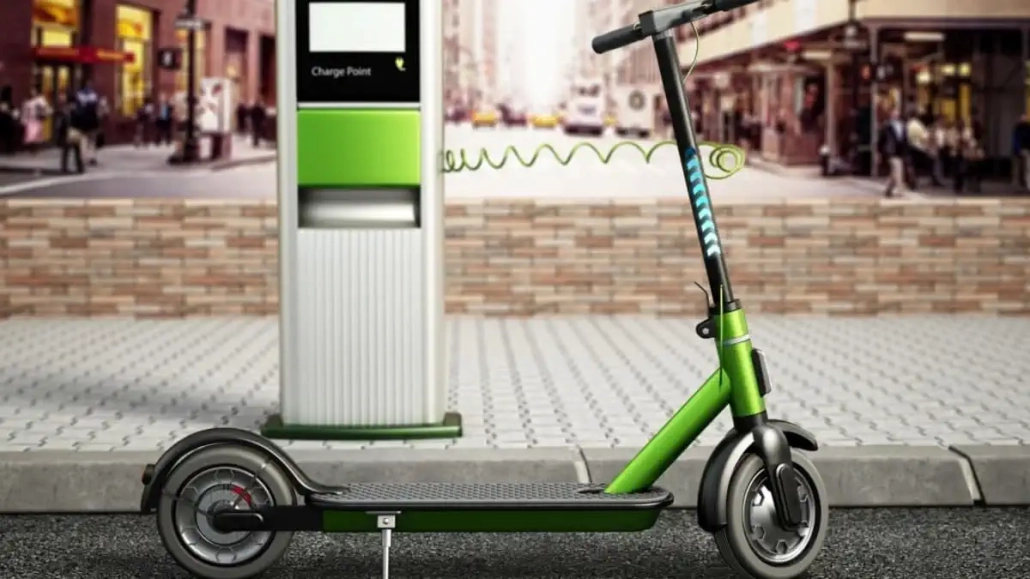
5. Classificazione della capacità: quanto succo ha davvero il tuo scooter?
Ti sei mai chiesto quanto "succo" può davvero contenere il tuo scooter? È qui che entra in gioco la valutazione della capacità. In unità chiamate Watt-Hour (WH), la valutazione della capacità è essenzialmente una misura dell'energia che la batteria di E-Scooter può archiviare. Pensaci in questo modo: una batteria da 1 wh può sostenere un watt di potenza per un'ora intera. E sì, le dimensioni importa. Maggiore è il punteggio di Watt-Hour della batteria, maggiore è la sua capacità energetica. Ciò significa che può alimentare il tuo scooter per un raggio più lungo, supponendo che la dimensione del motore sia costante. Il tuo scooter medio, ad esempio, di solito ha una capacità di circa 250 WH, che si traduce in un viaggio di circa 10 miglia a una velocità media di 15 miglia all'ora. Ma che dire delle grandi pistole? Bene, alcuni degli e-scooter ad alte prestazioni possono vantarsi di migliaia di watt-ore di capacità, dando loro potere di coprire distanze fino a 60 miglia. Quindi la prossima volta che controlli la batteria dello scooter, ricorda: è tutto per le ore di watt!6. C Fores: svelare il mistero della velocità di scarico della batteria dello scooter
Benvenuti in un'altra affascinante caratteristica della batteria del tuo E-Scooter: il C-Rate. Questo piccolo numero misterioso riguarda la velocità; In particolare, quanto velocemente la batteria carichi o si scarica. Ecco come funziona. Una batteria con un tasso C di 1C può essere completamente succosa in un'ora. Abbastanza facile, giusto? Ora, un tasso C di 2C significa che la batteria verrà caricata completamente in appena mezz'ora. Sul lato ribaltamento, un rate C 0,5C richiederebbe due ore per caricare completamente, ma non si tratta solo di ricaricare. Il C-rate può anche raccontarci della velocità di scarica della batteria. Supponi di avere una batteria completamente carica con una capacità di 10Ah. Con un rating C di 1C, può fornire 10 amp per un'ora. Se stai lavorando con un rate C 0,5C, ti darà 5 Amp in due ore. E per una tariffa 2C? Riceveresti 20 amplificatori per mezz'ora. In Essenza, il C-Rate della batteria fornisce preziose informazioni sulla velocità con cui può consegnare o riempire la sua energia immagazzinata. Un po 'utile di conoscenza da avere sotto la cintura, non è vero?7. Suggerimenti per mantenere la durata della batteria a scooter elettrica
Riding your electric scooter is fun, no doubt about it. But keeping your electric scooter battery time longer? That's where the real satisfaction comes in. When it comes to Li-ion batteries, like those powering your e-scooter, you're looking at about 300 to 500 charge/discharge cycles before seeing a noticeable drop in capacity. Put in perspective, that's a whopping 3,000 to 10,000 miles on an average scooter!Now, don't panic when you hear "drop in capacity". It doesn't mean your battery's on its last legs. Rather, you might notice a 10 to 20% decrease in capacity that gradually worsens over time. Thanks to modern battery management systems, you won't need to stress too much over prolonging electric scooter battery time. But if you're all about efficiency, there are a few things you can do to stretch those cycles even further.Avoid storing your scooter with the charger plugged in or when it's fully charged for long periods. Similarly, don't let your scooter's battery get too low. Most manufacturers recommend storing your scooter with about 50% charge, and topping it up to this level now and then for extended storage. Extreme temperatures, both hot and cold, are no friends to your battery. Stick within 32 to 113 degrees Fahrenheit for optimal performance. And finally, consider charging at a lower C-rate, which means charging your battery slower relative to its max capacity.By taking a little extra care, you can go the extra mile - or a few thousand - on your electric scooter. Enjoy the ride!

